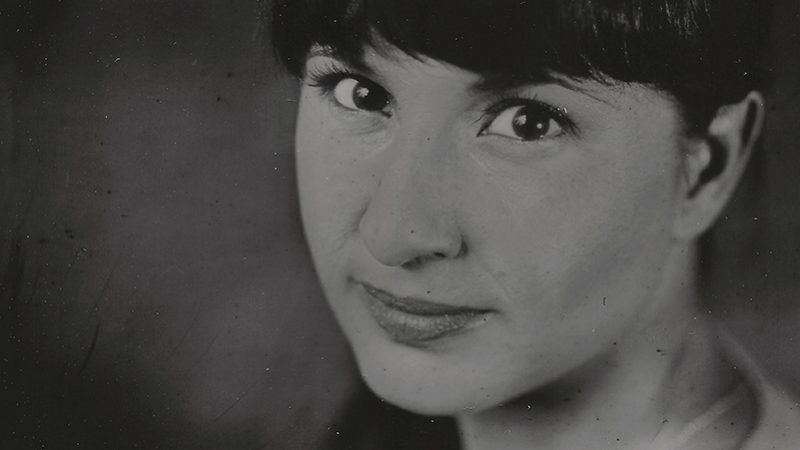
Designer Elizabeth Harper’s busy schedule is a great fit for her – and her students.
In addition to a full class load, the SDA’s assistant professor of lighting design has a slate of professional regional productions coming up – including assignments at the Pasadena Playhouse, the Geffen Playhouse, the Oregon Shakespeare Festival and the Denver Theatre Center. Some of the gigs will take place during the summer recess while others will overlap the academic schedule both this semester and during the 2019-2020 academic year.
The ability to balance and blend her work on campus and professionally is part of what Harper says has made her work at USC so enriching.
“My teaching schedule allows me – and USC has really encouraged me – to keep working, to stay current in the field and to bring everything I can from the field into class, and whenever I can, to bring my class into a professional environment,” Harper said. “That’s one of the reasons I think USC’s program is headed in a great direction.”
During the year she has been teaching – first as an adjunct before joining the faculty in the fall – Harper has had many occasions to give students a window into her work. For the world premiere of Eliza Clark’s Quack at the Kirk Douglas Theatre last October, Harper showed the technical challenges of working on a play that was experiencing changes up to its opening night. A backstage tour provided the students with perspective into how Harper dealt with elements like a high ceiling and lighting three sets on a turntable.
For a new production of the musical Rock of Ages at the 5th Avenue Theatre in Seattle, Harper showed her Lighting I students a different set of variables.
“That’s not a new play; it’s been done a million times, but this was a new production and it had a substantial moving light rig,” Harper said. “It’s a little bit of a tweak of how you adapt your process when anything can be anywhere in any color, and how do you cue to pop music as opposed to supporting text?”
“My Lighting II students are really going to get a taste of it when we address dealing with a moving light rig and designing not just for theatre, but also for music and corporate events as well this semester,” she continued.
Harper has worked extensively both in and outside of theatre. A member of her drama club circuit in high school in St. Louis, Mo., Harper was recruited to set up microphones and projections and do some basic lighting when the auditorium at Lindbergh High School was rented out. She studied lighting as an undergraduate at Webster University and earned an MFA from Tisch School of the Arts at New York University.
Moving to Los Angeles out of graduate school, Harper picked up work doing architectural lighting, corporate work and residential lighting (“I did the backyard lighting for minor Saudi royalty,” she said). Anxious to get back into theatre lighting, she hooked up with USC alum Michael Michetti, co-artistic director at the Theatre @ Boston Court and designed a production of Tom Jacobson’s The Twentieth-Century Way in 2010.
Assignments at major regional theatres soon followed that took Harper to such places as South Coast Repertory, the Geffen Playhouse and the Pasadena Playhouse. This summer at the Geffen, her assignments include back to back productions: Invisible Tango by the Portuguese magician Helder Guimarães, followed by the Sherlock Holmes-inspired Mysterious Circumstances.
Harper, who previously taught at CalArts, was drawn into the classroom out of a desire to help other artists tell their stories, particularly women and people of other underrepresented backgrounds.
“It’s unusual still to have a woman working in lighting design, and the women that do work, the higher up you go, the fewer shows you get,” she said. “It was only through mentors that I was able to recognize what I brought to the table and navigate those waters. So I feel that I owe it not just to women, but also to anyone that is currently underrepresented in lighting design. We’re still not where we should be in terms of representation, and I want more of that. I want to bring those people in and I want to help them navigate the waters.”
“When I went to school I wanted to know how it really was. I wanted to learn the hard truths and I wanted to go to top schools,” she continued. “What I want to do as a teacher is tell them how it really is, but I don’t want that education to end there. I want them to imagine how it could be, because I think we, as a professional community, can be better than we are.”
In addition to the two-part Lighting Design I and Lighting Design II course, Harper teaches the newly created Vectorworks class, as well as co-teaches the course in advanced theatrical production.
In the fall of 2019, SDA will debut new lighting design classes that Harper had a hand in selecting and shaping. In the crafting of the new curriculum, Harper says she has been looking at ways to maximize hands-on learning in the light lab. She envisions bringing in guest artists to teach or mentor in order to expand the number of voices that the students will experience.
“We’ll have a variety of artists who are all working professionally, who are all going to give you a slightly different take on what design is and where you’re going with it – which is going to be really reflective of the real world when you have your director in one ear and your producer in another ear,” said Harper. “My goal at USC is not to churn out a bunch of mini-mes who do lighting exactly how I think lighting ought to be done. My goal is to give all of our students the tools and then set them free to tell their own stories.”